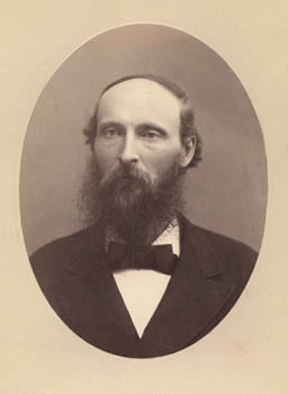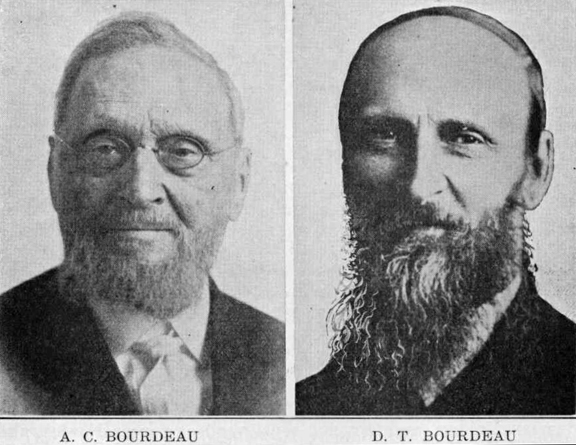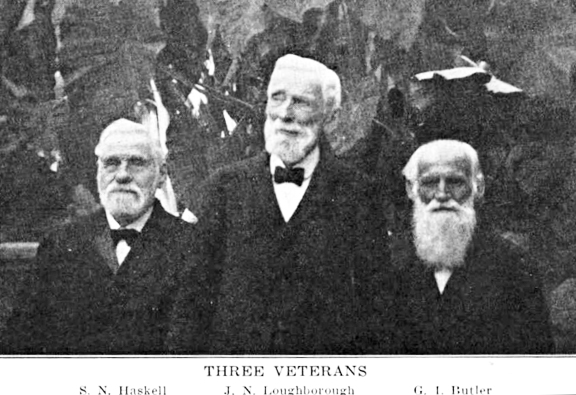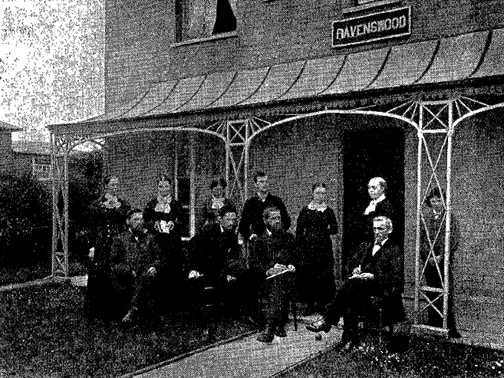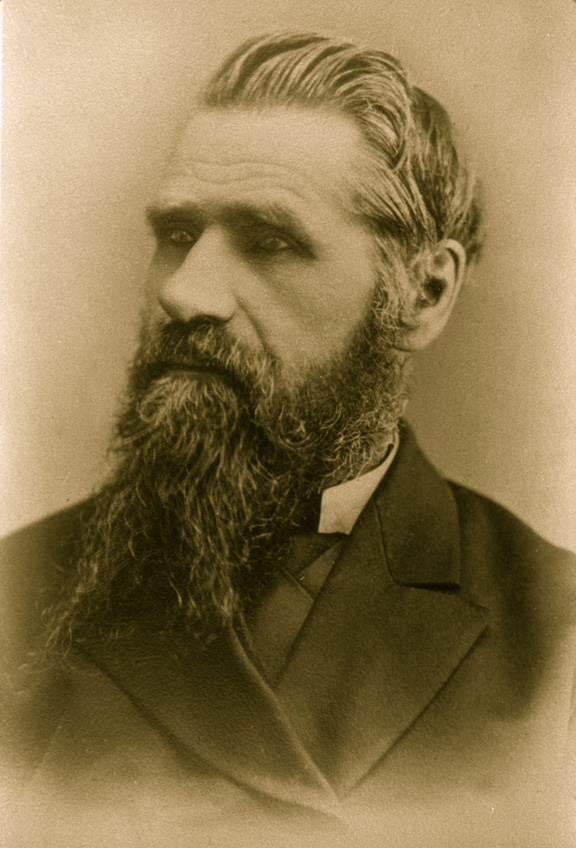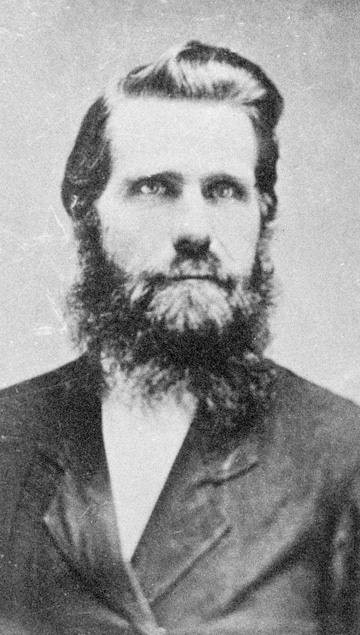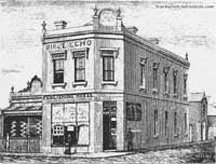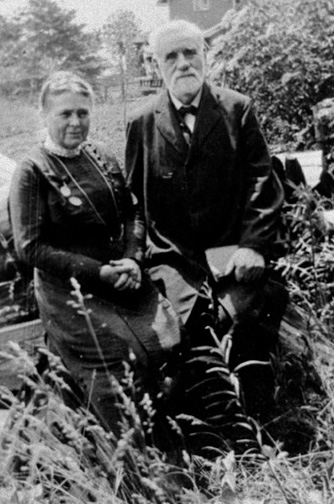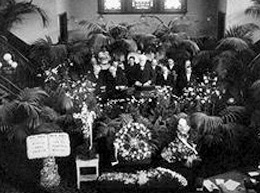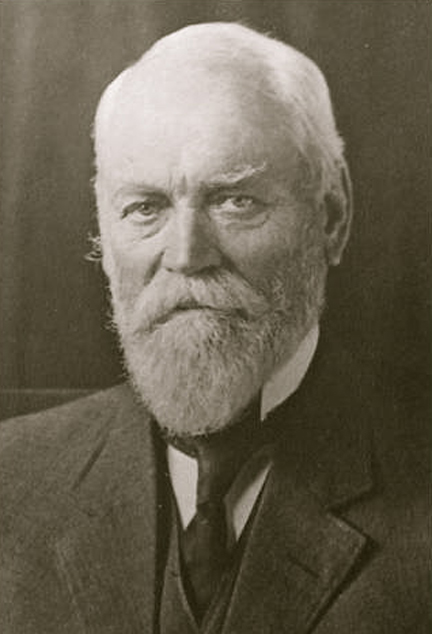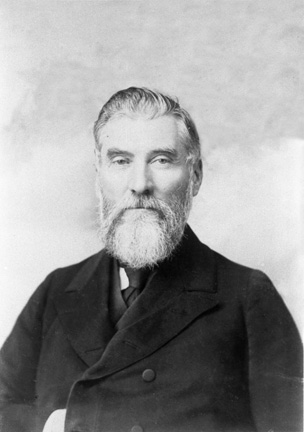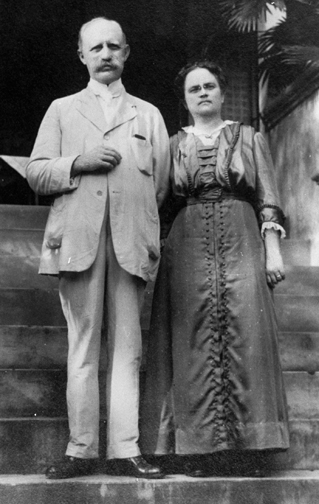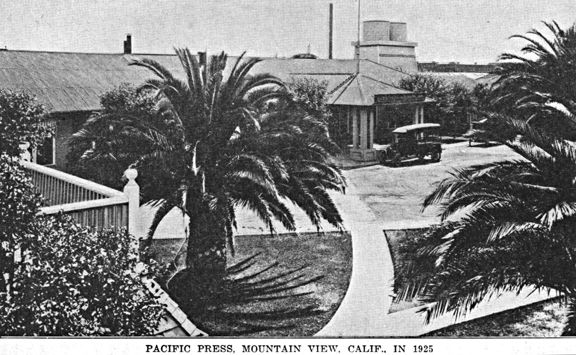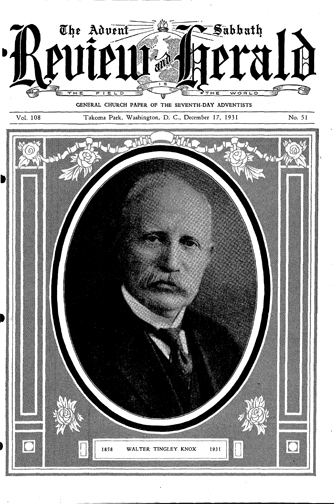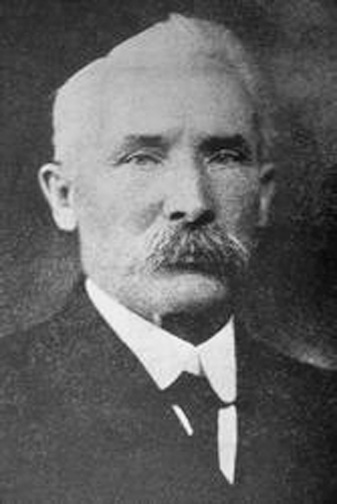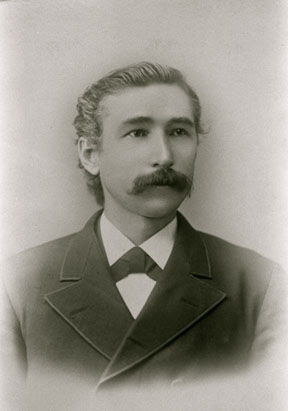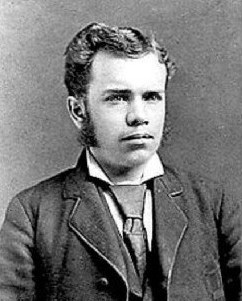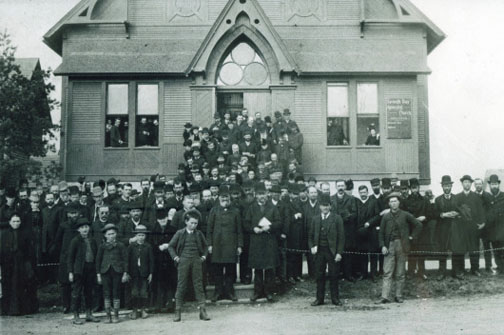California Conference and Northern California Conference History
TIMELINE
1844 – The Millerite “Great Disappointment”
1848 – California became a possession of the United States, admitted as a state in 1850.
1855 & 1857 – Daniel Eaton (perhaps the first Adventist in California) wrote to the Review & Herald asking for an Adventist worker to come to California.
1859 – Merritt G. Kellogg (brother of Dr. John Harvey Kellogg and W. K. Kellogg) came west, settling in San Francisco. His first convert was B. G. St. John.
1860 – The name “Seventh-day Adventist” was officially selected at a meeting in Battle Creek, Mich.
1863 – The Seventh-day Adventist Church was officially organized at the first General Conference Session, Battle Creek, Mich.
1865 – Merritt Kellogg and B. G. St. John raised $133 in gold and sent it to the General Conference with a request for a minister to be sent to California. No one was available to come.
1868 – J. N. Loughborough and D. T. Bourdeau were sent by the General Conference to California. Their first tent meeting was held in Petaluma, with 20 converts.
1869 – Seventh-day Adventists formed a temporary state organization in California with about 75 known members: D. T. Bourdeau, president; J. F. Wood, secretary; J. N. Loughborough, treasurer.
1869 – First Adventist church west of the Rockies was built in Santa Rosa.
1872-73 – Ellen and James White spent the winter with Adventists in California. Their first appointment was at a small camp meeting in Windsor (near Santa Rosa).
1873 – The California Conference was formed with seven churches and 238 members; tithe was $2,151.51. J. N. Loughborough served as president. Offices were in Oakland.
1874 – June 4, Oakland, first edition of Signs of the Times was printed (James White, editor).
1874 – October, Yountville camp meeting, those in attendance raised $19,414 for Signs of the Times. (Yountville church today is named “Signs Memorial Seventh-day Adventist Church”)
1875 – Pacific Press Publishing Assn. organized in Oakland. Moved to Mountain View in 1904. Relocated to Nampa, Id. in 1984.
1878 – Adventists in Nevada were taken under the “watch care” of the California Conference.
1878 – Rural Health Retreat established in St. Helena (now St. Helena Hospital), the oldest still-operating Adventist hospital in the world.
1882 – Sidney Brownsberger started an academy in Healdsburg, with 28 students ages 5 and up. Would become Healdsburg College in 1899, and then Pacific Union College in 1906, closing in 1908. (The school relocated to Angwin in 1909).
1883 – Nevada was officially added to the responsibility of the California Conference. (In 1913 the Nevada Mission was formed.)
1889 – Utah and Arizona were added to the California Conference. (The General Conference took responsibility for Utah in 1894 and for Arizona in 1895.)
1890 – Maiden voyage of the mission ship Pitcairn, which operated in the Pacific Ocean until 1900 (6 voyages). Paid for by Sabbath School offerings. Built in Benicia. Launched in Oakland and sailed from San Francisco.
1900 – Ellen White moved to Elmshaven, near St. Helena. She died there in 1915.
1901 – The California Conference became part of the newly formed Pacific Union Conference, which then included territory that now is both the Pacific Union and North Pacific Union conferences.
1901 – The California Conference was divided into two parts. The area of the state south of the Tehachapi and Santa Ynez mountains was organized into the Southern California Conference. The rest remained with the California Conference, with headquarters still in Oakland.
1908 – Lodi Academy & Normal Institute opened, primarily for the training of teachers.
1909 – Pacific Union College, and PUC Prep, opened in Angwin. (Formerly, Healdsburg College – see 1882 above.)
1911 – The California Conference was again divided, this time into three conferences: the California Conference, the Central California Conference, and the Northern California-Nevada Conference (with headquarters in Lodi).
1915 – The California Conference once again was divided into two parts. The California Conference contained territory south of the San Francisco Bay and west of the Coast Range. The area north of the Bay and west of the mountains was organized as the Northwestern California Conference, with headquarters in Santa Rosa. These two conferences were merged back into one conference in 1918, as the California Conference, headquartered in Oakland.
1932 – The California Conference terminated as a separate conference, and its territory was divided between the newly named Northern California Conference and the Central California Conference.
1962 – Rio Lindo Adventist Academy opened in Healdsburg as the NCC boarding school, replacing the boarding school program formerly available at Lodi Academy.
1972 – The headquarters for the Northern California Conference relocated from Oakland to Pleasant Hill.
2019 – The headquarters for the Northern California Conference relocated from Pleasant Hill to Roseville.
HISTORY
In 1848 the Golden State became a possession of the United States after the Mexican American War, by the treaty of Guadalupe, although there were earlier Spanish residents, whose missions were south of San Francisco. The Russians had put their mark in California in the northern part of the state, naming the Russian River and Sebastopol, but they left by 1824. The population of the entire state in the early 1840s was 6,000, but by 1849 the population of San Francisco alone was 85,000. Gold had been discovered in the Golden State at Sutter’s Mill, and California was welcomed into Union in 1850.
Merritt Kellogg Shares the Good News
In 1859, Merritt G. Kellogg, the oldest son of J. P. Kellogg, moved to San Francisco. He and his family shared the Good News by sharing literature and books. Their first convert was B. G. St. John, a forty-niner who made and lost a large fortune in gold mining. In 1861, Kellogg held meetings in the courthouse in San Francisco on a weekly basis, and there were eventually 14 who confessed their faith in Jesus and His Church.
Kellogg then organized a Sabbath School in his home. Soon an Adventist cobbler, L. W. Cronkrite, arrived in San Francisco. He hung a placard of the Ten Commandments and a prophetic chart on his shop wall. When customers made inquiries about the strange beasts, Cronkrite gave them a study on the prophecies. So many were interested that in the fall of 1865 the little Adventist company decided to send $133 in gold to Battle Creek to pay the travel expenses of a minister to labor in California. However, the General Conference had no one to send at that time (Testimonies to the Church, IV, 489, 490).
In the spring of 1867, the little group of believers in San Francisco decided to lodge their appeal once again to the General Conference by sending Kellogg to the General Conference Session, but unfortunately, he was not able to arrive in time for the session. Kellogg decided to take matters into his own hands. He sold his home on the West Coast, traveled eastward, and occupied himself until the next General Conference Session which was held May 28, 1868.
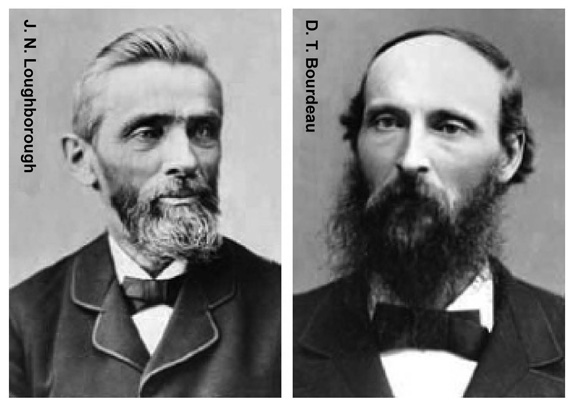
First missionaries to California
At first it seemed his plea would again go unheeded. Then, when only two workers remained to be assigned, one of them, J. N. Loughborough, arose. He spoke of recent dreams which had left him with a strong impression that he should hold tent meetings in California. “Should Elder Loughborough go alone?” asked James White. After all, Christ had sent his disciples out two by two. That seemed a good plan to follow for so distant a field. D. T. Bourdeau thought so too; he would gladly accompany Loughborough.
Immediately James White set about raising $1,000 to purchase a new tent for California and to finance passage for the Loughboroughs and Bourdeaus by way of Panama. No time was wasted. Less than a month after making their decision, these “missionaries” boarded a ship in New York City. Twenty-four days later they were in San Francisco. Here they were warmly welcomed by the St. Johns and other members of the Adventist company (O. Macomber, Pioneering the Message in the Golden West, (1946) 54, 58, 59, 63-67).
Public Evangelism Heads West
The discovery of gold in California had made the state an empire unto itself. Ellen White had cautioned to use economy but at the same time she urged the men to spend as needed to make sure God’s work would grow, knowing that the liberal donations of many would more than take care of the expenses that would be incurred in the spreading of the gospel on the West Coast.
Bourdeau and Loughborough arrived in San Francisco on July 18, 1868, and immediately found lodging with St. John, “the converted forty-niner.” As they scouted the San Francisco area, they found that food was very inexpensive but the rental of homes and buildings to hold meetings was very expensive. There was a church in a small town called Petaluma about 50 miles north of San Francisco, which was known as an Independent church. Members had seen a notice in an Eastern newspaper that two men were traveling west with a tent to hold evangelistic meetings. They were able to make contact with Bourdeau and Loughborough in San Francisco, and the Independent church invited them to Petaluma to hold meetings.
On August 13, about a month after arriving in California, Bourdeau and Loughborough launched their series of tent meetings in Petaluma at the Independent church. One of the members of this Independent church, a Mr. Wolf, had a dream one night where he saw two men kindling five fires. In his dream, he saw the ministers of the other churches in Petaluma trying to put these fires out, but the more they tried to put the fires out, the more they burned. Finally he heard the ministers say in the dream, “It is of no use. Leave them alone. The more we try to put out the fires, the better they burn” (J. N. Loughborough, Rise and Progress of the Seventh-day Adventists, 276-279).
Everything seemed to be going fine until the missionaries presented the Sabbath doctrine, and a division arose among the Independent church members, with only six accepting the Sabbath doctrine and uniting with the Seventh-day Adventist group.
Upon completing these meetings in Petaluma, Bourdeau and Loughborough moved on to Windsor to the north, then to Piner, then on to Santa Rosa and Healdsburg. The “five fires” that had been kindled were now burning.
Santa Rosa Church – the first Adventist church west of the Rockies
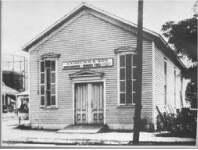
First Adventist Church West of the Rockies
Santa Rosa Church – the first Adventist church west of the Rockies
There was much intense excitement in this area of California regarding the establishment of the small Advent groups. It was decided that a church building should be established in this area, and Santa Rosa was the city chosen. A man donated two lots of land and $500, and as a result, the first Seventh-day Adventist church in California, and the first west of the Rockies, was established and organized in Santa Rosa, November 1869.
In October 1872, the first Adventist camp meeting in the State was held at Windsor, lasting one week. The camp consisted of 33 tents in addition to the 60-foot circular tent in which the meetings were held. James and Ellen White attended, and their message was heartily received by the believers. They remained in the state until the end of Feburary 1873, holding meetings with the various churches and companies. On February 15 and 16 the California Conference was organized at a meeting held in Bloomfield, Sonoma County, the Sabbath keepers then numbering 238 (M. Ellsworth Olsen, Origin and Progress of Seventh-day Adventists, 290).
The Work in California Expands
By the time the California Conference was organized in February 1873 (a temporary organization having been formed in 1869), Conference President Loughborough could proclaim to the assembled delegates, “None of us, it seems to me, can doubt the utility and practicability of good camp-meetings. They are almost indispensable to the work of our cause” (Harold Oliver McCumber, Pioneering the Message in the Golden West, 51-107).
Camp meetings, having proved so successful in the past, inspired the California Adventists to organize another state-wide camp meeting for the fall of the same year. This camp meeting was a one-week affair held in a shady grove at the confluence of Conn Creek and the Napa River, about a mile northeast of Yountville. Sixty-three tents were neatly arranged around the thoroughfares Present Truth Street, Law and Order Street, etc. On Sunday, nearly 1,500 people pushed in and out of the big evangelistic tent, and afterwards 29 were baptized in the river (McCumber, 112).
On June 4, 1874, James White began to issue an eight-page semimonthly paper, The Signs of the Times, as a further means of spreading the Adventist principles on the Pacific Coast. After producing six issues, he arranged with the California Conference to take charge of the paper and returned east to obtain means to put the enterprise on strong footing. At the General Conference held in August of that year, it was proposed to raise $6,000 east of the Rocky Mountains for this purpose, provided the brethren on the West Coast would raise $4,000, secure a suitable site, and erect a building. Elder George I. Butler brought this proposition to the California brethren assembled at the Yountville camp meeting in October, and they responded by raising $19,414 in coin. The Sabbath keepers in California then numbered 550, and the yearly tithe amounted to more than $4,000. This resulted in the establishment of Pacific Press Publishing Association in Oakland.
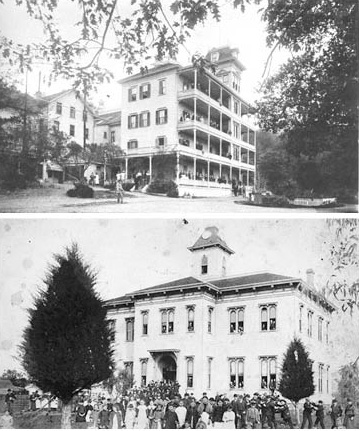
Top: Precursor to St. Helena Hospital Bottom: Healdsburg College
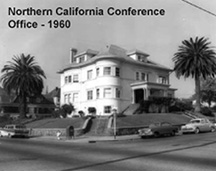
The work in California emphasized health and education from its early days. A small health resort called Rural Health Retreat was opened near St. Helena in 1878 under the direction of Merritt Kellogg, who had received medical training in 1867. During the 1890s, the retreat was renamed St. Helena Sanitarium.
In 1882 Healdsburg Academy (soon to become College) was established in the town of Healdsburg, 15 miles north of Santa Rosa. In 1906, its name was changed to Pacific Union College. The church purchased the Angwin Resort in the mountains above St. Helena and moved the college there in 1909.
Pitcairn
From its early days, the Adventist Church has had an interest in overseas mission work. In 1890 the mission ship Pitcairn, built in Benicia, was launched in Oakland and sailed from San Francisco. Money for this mission venture was raised through Sabbath School offerings. The ship sailed the Pacific Ocean for six voyages with Pitcairn Island as her first port of call on each journey. The ship was sold in 1900.*
Beginning in 1901, a series of changes occurred to reorganize the work in California. The Southern California Conference was formed in 1901 followed by the Central California Conference in 1911, in addition to the California Conference with headquarters in Oakland. For a brief time, the California Conference territory also spawned the Northern California-Nevada Conference as well as the Northwestern California Conference. Ultimately the territory was once again restructured, with the termination of the California Conference in 1932, renaming it as the Northern California Conference, with Morris Lukens as president.
*Find out more: http://library.puc.edu/pitcairn/studycenter/pit_puc.shtml
(Compiled by Ted Calkins)
If you find any inaccuracies with this information, please send a notification to info@nccsda.com.
Conference Presidents

DANIEL T. BOURDEAU
President of the temporary California Seventh-day Adventist organization (1869-1870)
Daniel Bourdeau was born in Enosburg Falls, Vermont, on Dec. 28, 1835. At age 11 he joined the Baptist faith, but struggled when he learned that his parents and older brother had joined the Sabbatarian Adventists in Vermont. In his attempt to change their minds, he too was convinced of the Sabbath and other doctrines. He witnessed Ellen White in vision at Buck’s Bridge, New York, on June 21, 1857, at which time he saw first hand the supernatural working of God in her life (read his description of the event). Both brothers were ordained as Adventist ministers and began a self-supporting work among French-speaking people in Quebec and Vermont. In 1861 Daniel married Marion E. Saxby, with James White officiating.
At the General Conference session held in Battle Creek, Mich., in May 1868, Bourdeau agreed to join J. N. Loughborough in a call from James White to serve in starting the Adventist work California. Bourdeau and his wife had been impressed to be ready for a new assignment, and as a result had sold all of their household belongings before coming to Battle Creek. The Bourdeaus and Loughboroughs sailed from New York on June 24, 1868, for California, via Panama, arriving in San Francisco on July 18.
Bourdeau and Loughborough began their work with tent meetings in Petaluma, resulting in 20 converts. Meetings in other nearby towns quickly followed. By the next year, 1869, there was a desire to begin organizing the believers, and so a temporary California state organization of Adventists was put in place with about 75 known believers. Bourdeau was elected to serve as president along with J. F. Wood as secretary and J. N. Loughborough as treasurer. This was the precursor to what would soon become the California Conference.
In 1870, Bourdeau left California for work in Wisconsin and Illinois, organizing churches among the French-speaking people there. In 1876, he went to Europe to spend a year working with J. N. Andrews, editing papers and conducting evangelism in Switzerland, France and Italy. He returned to Europe in 1882 and was joined there in 1884 by his brother Augustin. Together they worked in France, Switzerland, Corsica, Italy and Alsace-Lorraine. Bourdeau returned to the United States in 1888, continuing to work as an evangelist and writer with both French and English communities.
Sources:
SDA Encyclopedia
Wikipedia.com
Historical Dictionary of Seventh-day Adventists, Gary Land
Heartwarming Stories of Adventist Pioneers, Norma J. Colllins
J. N. LOUGHBOROUGH
President of the temporary California SDA organization (1870-1873); president of the California Conference (1873-1878, 1887-1890)
John Norton Loughborough was born in Victor, New York, on Jan. 26, 1832. He became a Christian at an early age, and began preaching for First-day Adventists when he was 16. He was introduced to the Three Angels’ Messages by J. N. Andrews in September, 1852, at meetings in Rochester, New York, and was immediately convinced of the seventh-day Sabbath. Devoting himself to preaching, he was ordained at Grand Rapids, Michigan, June 18, 1854, by James White and M. E. Cornell.In 1856 he became discouraged by the enormous challenges of those days and decided to go to Waukon, Iowa, to farm. James and Ellen White traveled there by horse and sleigh to encourage him. The Whites persuaded Loughborough to return to the ministry, and he never wavered again – no matter how difficult the tasks were.
For the next several years, Loughborough conducted evangelistic work in Pennsylvania, New York and the Midwest. He took an interest in selling Adventist literature and helped pioneer the concept of selling printed material in conjunction with evangelism meetings. He then served as president of the Michigan Conference (1865-1868) and treasurer of the General Conference (1868-1869).
While still a preacher for the First Day Advent Church, Loughborough married Mary J. Walker in Rochester (1851). Together they had three children, all born in Battle Creek, Michigan — a son, Delmer, and twin girls, one of whom died at birth. Tragically, Mary also died in childbirth (1867). Mother and daughter were buried together.
In 1868 Loughborough and D. T. Bourdeau were sent by the General Conference to pioneer the Adventist work in California. Loughborough had been thinking of California for several months, based on a number of dreams he had received showing him making the journey to California by ship. Thus, at the General Conference session in Battle Creek, when James White asked if anyone might be willing to go west, Loughborough stood and said he was willing. Bourdeau joined him. Just prior to boarding the ship in New York, Loughborough married Margaret Newman, with Bourdeau performing the ceremony.
The Bourdeaus and Loughboroughs sailed from New York on June 24, 1868, bound for California, via Panama, arriving in San Francisco on July 18. They began their work with tent meetings in Petaluma, resulting in 20 converts. Meetings in other nearby towns quickly followed. By 1869, there was a desire to begin organizing the believers, and so a temporary California state organization of Adventists was put in place with about 75 known believers. Bourdeau was elected to serve as president and Loughborough as treasurer, along with J. F. Wood as secretary. When Bourdeau left California (1870) for work in Wisconsin and Illinois, Loughborough took over as president.
The California Conference of Seventh-day Adventists was officially formed in 1873, comprising seven churches and 238 members; tithe was $2,151.51. Loughborough was selected to serve as the first president, with offices in Oakland. Soon afterward, he also functioned as president of the newly formed Pacific Press Publishing Association (1875), also located in Oakland. It was during this time that his second wife, Margaret (Maggie) passed away. In 1877, he married his third wife, Anna Driscol, who was secretary and treasurer of the publishing house; James White officiated at the ceremony.
In 1878, Loughborough, as president of the Nevada Association, baptized the first three believers in that state . That same year he was sent by the General Conference to open the formal SDA work in England. During his five years there, 37 people were baptized and a church was established in Southampton. He returned to the United States in 1883 and traveled on behalf of the General Conference in the North Pacific Region, serving for a time as president of the Upper Columbia Conference (1884-1885).
Returning to the Bay Area in 1887, he was once again elected to serve as president of the California Conference, remaining in that capacity until 1890. From there, he went on to serve as the president of two more conferences – Nebraska and Illinois.
In the following years, Loughborough did a great deal of traveling to churches and camp meetings, telling stories of many of the things he had seen God do for His people through the years. He witnessed Ellen White in public vision more often than any other person, with the exception of her husband, James. Late in his life he claimed to have witnessed more than 50 public visions. Shortly after 1900, the Loughboroughs moved to Mountain View. Anna died there in 1907.
A widower once again, Loughborough made a world tour in 1908, at the age of 76, traveling through Europe, Africa, Hawaii, Australia and New Zealand. During this extended journey he traveled some 30,000 miles by water and 6,000 miles by land, attending 500 meetings and preaching 352 times. Soon after the end of this trip, he retired from active ministry, settling in Lodi to be near his daughter. He continued serving the church through occasional trips to camp meetings, institutions and General Conference sessions.
Due to failing health, Loughborough moved to St. Helena Sanitarium where he remained until he passed away on April 7, 1924, at age 92. A. G. Daniells, General Conference secretary, and M. C. Wilcox conducted the funeral service at the St. Helena church, after which he was buried in the St. Helena cemetery.
During his life, Loughborough was a prolific author. Some of his books include: Hand Book of Health; or a Brief Treatise on Physiology and Hygiene (1868); The Rise and Progress of Seventh-day Adventists(1892), which was the first denominational history (revised in 1905 as The Great Second Advent Movement); The Prophetic Gift in the Gospel Church (1901); and The Church, Its Organization, Order, and Discipline (1907), which served for many years as the forerunner of the SDA Church Manual. He wrote extensively for The Youth’s Instructor, Review and Herald, Signs of the Times, Pacific Health Journal (of which he was editor for a time), Bible Training School and Pacific Union Recorder.
Sources:
SDA Encyclopedia
The Advent Review and Sabbath Herald, Vol. 101, No. 16, June 19, 1924 (obituary of J. N. Loughborough)
Wikipedia.com
The Ellen G. White Estate, Inc. Website
Historical Dictionary of Seventh-day Adventists, Gary Land
Heartwarming Stories of Adventist Pioneers, Norma J. Colllins
Lighter of Gospel Fires, Ella M. Robinson
STEPHEN N. HASKELL
President of the California Conference (1878-1887, 1891-1894, 1908-1911)
Stephen Nelson Haskell was born in Oakham, Mass., April 22, 1833. He became a Christian in 1848, joining the Congregational Church. Within five years (1853) he was preaching part-time for the First-day Adventists, while also making and selling soap. But later that year, after receiving a tract titled “Elihu on the Sabbath” he began to keep the seventh-day Sabbath.
In 1850, Haskell married Mary Howe. The Haskells, along with several ladies, formed the Vigilant Missionary Society in 1869, dedicated to the distribution of printed tracts. This organization expanded to the Tract and Missionary Society and is sometimes referred to as the beginning of what we know today as the Adventist Book Center.
Between 1854-1870, Haskell worked as a self-supporting preacher within the Seventh-day Adventist movement in New England. He was ordained as a minister in 1870 with James White, J. N. Andrews and J. H. Waggoner officiating. Elected that same year as president of the New England Conference, he served in that capacity for the next 17 years.
Haskell was also elected as president of the California Conference in 1878, a position he held until 1887, while at the same time continuing to serve as president of the New England Conference. During this time, in 1882 he helped organize the first European Council in Europe and also founded South Lancaster Academy (now Atlantic Union College). In 1885 he was in charge of opening the Adventist work in Australia and New Zealand, which included starting the Echo Publishing Company (now Signs Publishing Company). And amazingly, in 1885 he was also elected president of the Maine Conference while still serving as conference president in California and New England.
In June 1887, Haskell, along with three Bible workers, opened the Adventist work in London, England, organizing the first Adventist church there. In 1888-89, he went on a world tour on behalf of mission outreach, visiting numerous locations in Europe, Africa, India, China, Japan and Australia. On that trip Haskell baptized the first Seventh-day Adventists in both China and Japan.
The California Conference elected Haskell to serve again as conference president in 1891. Mary Haskell passed away in January 1894, and shortly thereafter Haskell left the presidency of the California Conference, conducting meetings in Europe and Africa. Ellen White invited Haskell to come to Australia in 1896 to teach at the newly opened Avondale School for Christian Workers (now Avondale College). It was there that he met and married Hetty Hurd in 1897.
Returning to the United States in 1899, Haskell held various Bible training schools and evangelistic series across the country. In 1901 he worked in New York City, organizing the first African-American church there. Haskell came west to the Loma Linda and San Bernardino areas in 1905. Once again, in 1908 the California Conference elected him to serve as president for a third time, a position he held until 1911 when the California Conference was divided into three different territories. Haskell now “retired” at the age of 79.
Steven Haskell had a long-lasting friendship with James and Ellen White , dating back to the late 1850s. Ellen White wrote more letters to Haskell than to any other church leader. At the Battle Creek funeral service for Ellen White in 1915, Haskell was asked to preach the sermon.
In his later years, Haskell led out in temperance work in Maine (1911), began printing books for the blind (1912) and assisted in the development of the White Memorial Hospital in Los Angeles (1916). Hetty Haskell passed away Oct. 21, 1919, in South Lancaster, Mass. He died Oct. 9, 1922, at Paradise Valley Sanitarium in National City, Calif. He was buried next to his first wife, Mary, in Napa, Calif., with A. G. Daniells, R. F. Cottrell and J. L. McElhany presiding at the service. (McElhany served as president of the California Conference from 1915-1918).
During his life, Haskell was the author of several books that continue to be reprinted: The Story of Daniel the Prophet (1901), The Story of the Seer of Patmos (1904), The Cross and Its Shadow (1914) and Bible Handbook (1919).
A. J. BREED
President of the California Conference (1896-1897)
Almond Jarod Breed was born June 1, 1847, in Crown Point, New York, but was raised in Wisconsin. Early in his adult life he served as treasurer of one of the larger counties in Wisconsin.
On March 1, 1871, he married Asenath Lois Davis in Neillsville, Wisconsin. The couple accepted the Seventh-day Adventist message at meetings held by Henry Decker, who was the second president of the Upper Columbia Conference.
Breed served in a variety of administrative leadership roles for the Seventh-day Adventist Church. He was elected as president of the California Conference in 1896, serving in that capacity only for about one year. He previously served as president of the Wisconsin Conference (1885-1890) and subsequently for the Upper Columbia Conference (1901-1906; the office was located at that time in College Place, Washington), as well as vice president of the North Pacific Union Association (beginning in 1910).
In 1900, while serving as a district superintendent for the Adventist Church, he and S. N. Haskell (also a former California Conference president) were sent to confront what was known as the “Holy Flesh movement” at a camp meeting in Muncie, Indiana. This matter was discussed at the 1901 General Conference session held in Battle Creek, Michigan.
During Breed’s service in the North Pacific Union, he was involved in the founding of Walla Walla College (now Walla Walla University), serving for a number of years as president of the WWC executive board.
Asenath Breed passed to her rest in College Place, Nov. 8, 1908. In 1912, Breed married Delia Wallace, and they also made their home in College Place. He died on Sabbath evening, August 13, 1938, at the age of 91. The Breeds (A. J. and Asenath) had one son, Frank, who preceded his father in death in 1927.
Sources:
The Advent Review and Sabbath Herald, Vol. 115, No. 40, Oct. 6, 1938 (obituary of A. J. Breed)
North Pacific Union Gleaner, Vol. 33, No. 34, Aug. 30, 1938 (obituary of A. J. Breed)
WALTER T. KNOX
President of the California Conference (1897-1900, 1906-1908)
Walter Tingley Knox was born in Pittsburgh, Penn., on July 4, 1858. He received his education primarily in Canada. At the age of 16 he came to California, seeking relief from malaria, and spent several years in Southern California. He became a Christian in 1879 and joined the Methodist Church. Walter married Barbara Bell Childs on Dec. 8, 1885. One child, Barbara, was born into their home.
Through Bible study and personal research, Knox accepted the doctrines of the Seventh-day Adventist Church in 1889. Almost immediatel y he began working for the church and by 1894 he was listed as an ordained minister.
In 1897 Knox was elected president of the California Conference, serving there through 1900. When the Pacific Union Conference was organized in 1901, Knox became its first president. (At that time, the Pacific Union included Alaska, Arizona, British Columbia, California, Hawaii, Idaho, Montana, Nevada, Oregon, Utah and Washington.) Once again, in 1905, Knox was elected to serve as president of the California Conference, holding that position for about two years.
Knox was elected to serve as treasurer of the General Conference in 1909, a position he held until his retirement in 1922. During this time of the church’s history, there was a significant and rapid expansion of overseas mission work, for which Knox wa s responsible to work out the financial details. A. G. Daniells was General Conference president during this time (1901-1922).
In retirement, Elder and Mrs. Knox moved to Mountain View, California. Until about two years prior to his death, he served as board chair for the Loma Linda Medical College, as well as a long-time member of the Pacific Press Publishing Association board of directors.
Walter Knox passed away from a stroke on Nov. 11, 1931, having just returned home from an automobile trip to San Francisco to pick up his wife. The funeral service, officiated at by A. G. Daniells, took place in Mountain View. Burial was at the Oak Hill Cemetery in San Jose.
Captions:
1. Portrait of Walter T. Knox
2. Walter and Barbara Knox
3. Pacific Press, Mountain View, California, in 1925
4. Cover design for The Advent Review and Sabbath Herald that published Knox’s obituary in 1931
Sources:
SDA Encyclopedia
The Advent Review and Sabbath Herald, Vol. 108, No. 51, Dec. 17, 1931 (obituary of W. T. Knox)
CLARENCE SANTEE
President of the California Conference (1900-1901) and the Northern California Conference (1915-1924)
Clarence Santee was born to a Seventh-day Adventist family in the state of New York on Jan. 25, 1856. While he was still a small boy, the family moved to northern Missouri, and later, when Knox was 17 years old, they moved again to southwestern Missouri. While attending school Santee met Miss Julia Hoff, a native of Illinois. They were married on May 1, 1878, in Jasper County, Missouri, and established their new home in Kansas.In 1879 Santee was given a license to preach by the Kansas Conference, where he also served for about two years as conference secretary and treasurer. From there Santee served the Missouri Conference as a licensed minister, and was ordained by that conference to the gospel ministry. He accepted an invitation to the Minnesota Conference in 1894, teaching at a Bible school in Minneapolis.
Santee was elected president of the Iowa Conference in 1896, serving in that role until 1900 at which time he was called to be president of the California Conference. As a side note, when Santee left Iowa, the secretary of the Iowa Conference—a woman named Flora Fait Plummer—became Iowa’s acting conference president. A year after his arrival in California, the conference (which covered the entire state) was divided into two organizations, and Santee served as the first president of the Southern California Conference. He was actively involved there with the establishment of San Fernando Academy, Glendale Sanitarium and Hospital, and Loma Linda Sanitarium.
In 1905 he became president of the Texas Conference, followed by his election in 1908 as president of the Southwestern Union Conference. Two years later in 1910, he accepted a position teaching Bible in Loma Linda at both the medical school and nurses’ training school, a role he held for five years. The Northern California Conference called Santee back to the presidency in 1915, and he led this territory for the next ten years.
Due to declining health, Santee retired and moved to Loma Linda, where he died on Sept. 11, 1930. The funeral was held at the Redlands Seventh-day Adventist church. His wife Julia died on Dec. 26, 1935, also in Loma Linda. They were the parents of four children: Olive (Smith), Florence (Casey), Orpha (Donaldson) and Rodney.
Sources:
SDA Encyclopedia
Pacific Union Recorder, Vol. 30, No. 10, Oct. 9, 1930 (obituary of Clarence Santee)
The Advent Review and Sabbath Herald, Vol. 107, No. 53, Oct. 16, 1930 (obituary of Clarence Santee)
Banks, Rosa Taylor, A Woman’s Place — Seventh Day Adventist Women in Church and Society, p. 52.
ALONZO T. JONES
President of the California Conference (1901-1904)
Alonzo Trevier Jones was born in Rock Hill, Ohio, on April 26, 1850. He joined the United States Army at the age of 20, serving for five years mostly in western states. Shortly before his discharge, Seventh-day Adventist evangelist Isaac Van Horn baptized Jones in Walla Walla, Wash. He began preaching for the Adventist Church on the West Coast, his sermons often lasting up to two and a half hours! In 1877 Jones and Frances Patten (sister to Van Horn’s wife) were wed. The couple had two daughters, Laneta and Desi.
Jones worked in the Northwest between 1875-1884, during which time he preached and raised up churches in Oregon and Washington. In 1880 the territory was divided into two conferences, and Jones became the first secretary of the new Upper Columbia Conference.
A student of Scripture and history, Jones also had an interest in writing and publishing. In 1884 he became assistant editor for Signs of the Times magazine, based in Oakland, Calif. A few months later, he and Ellet J. Waggoner became co-editors for the Signs, a position Jones held until 1889. At the same time, Jones and Waggoner were also editors of theAmerican Sentinel, the Adventist religious liberty magazine. Jones served in this capacity until 1896. From 1897 until 1901 he was editor in chief of the Advent Review and Sabbath Herald, with Uriah Smith as associate editor.
In addition to his editorial work in Oakland, Jones was asked to serve as a Bible teacher at Healdsburg College beginning in 1885, and he was also given the responsibility of pastoring the Healdsburg church in 1887.
Jones and Waggoner were at the center of the discussion and debate at the 1888 General Conference session held in M inneapolis over their emphasis concerning the biblical teaching about righteousness by faith—especially in relation to the understanding of the nature of God’s law as described in Galatians. Following these significant meetings, the General Conference Committee sent the two men to preach on that topic around the country, accompanied at times by Ellen White.
When Clarence Santee, president of the California Conference, became the first president of the Southern California Conference in 1901 as part of the division of the California territory, Jones was elected president of the remaining California Conference. His election took place in spite of his increasing criticism against the structure of church leadership! During his presidency he worked to strengthen the conference education system, primarily at Healdsburg College, as well as resolving some issues at St. Helena Sanitarium and Pacific Press. He also was instrumental in establishing medical treatment rooms and a health-reform restaurant in San Francisco, and organizing the Pacific Union Medical Missionary Association.
Jones was reelected president of the California Conference in 1903, but not without controversy. The General Conference leadership realized a change was needed, so late in 1903 they offered him the position of General Conference religious liberty department secretary, which he declined. Instead, in 1904 Jones accepted the invitation of Dr. John H. Kellogg to serve as president of Battle Creek College in Michigan—in spite of counsel given by Adventist church leaders for him not to accept, due to increasing conflict between Kellogg and the Adventist church. Jones became sympathetic with Kellogg’s cause, which ultimately resulted in his separation from denominational employment, as well as loss of church membership.
Jones continued writing and working for religious liberty causes, including involvement with publishing American Sentinel in Washington, D.C. For health reasons, in 1923 he moved back to Battle Creek, where he died on June 28. He was buried in Kalamazoo, Mich.
Some of the books written by Jones include: Abiding Sabbath and the Lord’s Day (1888), National Sunday Law (1889), The Third Angels Message (1895), The Great Empires of Prophecy (1898) and The Empires of the Bible (1904).
Sources:
SDA Encyclopedia
The Advent Review and Sabbath Herald, Vol. 100, No. 26, June 28, 1923 (obituary of Alonzo T. Jones)
Wikipedia.com
From 1888 to Apostasy—The Case of A. T. Jones, by George R. Knight, Review and Herald Publishing
A.S. KELLOGG
President of the California Conference (1904-1905)
Arthur Smith Kellogg was born in Hadley, Hampshire County, Mass., (now part of greater Springfield) on Nov. 2, 1858. The Kellogg family was an extremely large one. Arthur’s father, Moses Smith Kellogg, and John Preston Kellogg were brothers (part of a family of 13 children), making Arthur cousin to such well-known pioneers as Dr. John Harvey, Will Keith (“the cereal king”) and Dr. Merritt Gardner Kellogg.
His obituary stated that “for a number of years he was associated with Dr. J. H. Kellogg and W. K. Kellogg in the Sanitarium food company, and did much of the experimental work for many well-known products” of the day. He accepted the Seventh-day Adventist truth in the early 1880s and was one of the pioneers in the colporteur work, selling hundreds of copies of Bible Readings and other early publications.
On Sept. 25, 1883, Arthur married Sadie Taliaferro, who died May 30, 1905. They had three children: Harry, Perry and Helena. He later married Della Sawyer; she died Oct. 26, 1932.
Kellogg was active as a pastor and administrator in the California Conference, serving as vice president during the presidency of A. T. Jones. When Jones left California in 1904 to work for J. H. Kellogg as president of Battle Creek College, A. S. Kellogg became president for the California Conference, which at this time included all the territory in California north of the Tehachapi Range, as well as all of Nevada. He served as president until June 1905.
During his last illness he was quoted as remarking “My hope is strong in the triumph of the third angel’s message.”
Kellogg died in Redondo Beach, Calif., March 28, 1945.
(Any photos of Kellogg and/or information about his life and ministry would be greatly appreciated. Please send it to info@nccsda.com.)
Sources:
The Advent Review and Sabbath Herald, Vol. 122, No. 25, June 21, 1945 (obituary of Arthur Smith Kellogg)
The Pacific Union Recorder, Vol. 44, No. 47, June 27, 1945 (obituary of Arthur Smith Kellogg)
If you find any inaccuracies with this information, please send a notification to info@nccsda.com.
